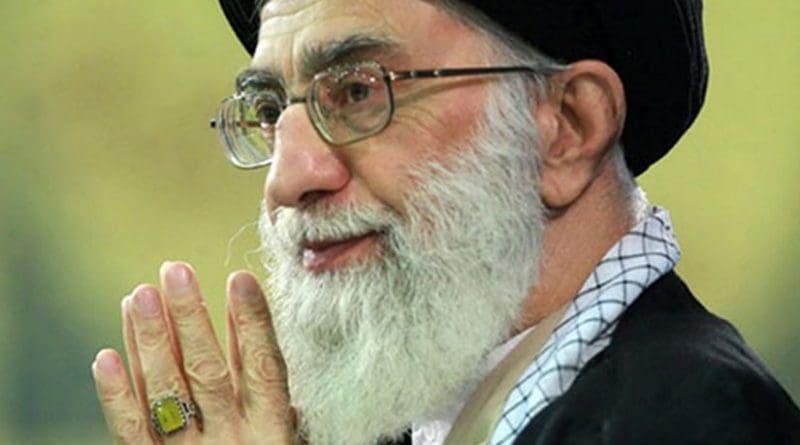Tensions Between US And Iran Spell Trouble For India – Analysis
By Observer Research Foundation
The new Iran strategy of the Trump Administration is aimed at “neutralising the government of Iran’s destabilising influence and constraining its aggression, particularly its support for terrorism and militants.”
By Harsh V. Pant
US President Donald Trump finally declared in October that he would not certify Iran’s compliance with the much touted 2015 nuclear deal signed by the Obama Administration. In doing so, he ignored the assessment of every major US ally, a host of international monitors, and even his own secretaries of State and Defence, Chairman of the Joint Chiefs, and US intelligence agencies who had said with certainty that Tehran remains in compliance with the 2015 accord. But acquiescing to his advisors, Trump decided not to pull out of the deal as he had promised to do on the campaign trail in 2016. Instead, Trump has put the ball in the court of the US Congress which now has to come up with guidelines under which sanctions can be placed again on Iran. It is up to the Congress to decide whether to reimpose some economic sanctions that were lifted in return for Iran limiting sensitive nuclear activities as part of the nuclear deal arrangements.
According to Trump, the Obama Administration’s focus on Iran’s nuclear program to the exclusion of the Iranian regime’s broader regional activities has allowed Iran’s influence in the region to reach substantively over the last few years. This is best reflected in Iraq where Iranian Quds Force chief Qassem Soleimani visited the leaders of the Patriotic Union of Kurdistan, or PUK, in northern Iraq over the last few days.
Within hours of this visit, PUK fighters began pulling out of Kirkuk, paving the way for Iraqi forces and Iranian-backed militias to pour into the city and its surrounding oil fields. This caught the US off guard, which is witnessing an all-round confusion in its Iraq policy.
But even after Trump’s announcement of a new Iran strategy, sections of the White House have suggested that it wants to stick to the Iran deal.
“I think right now, you’re going to see us stay in the deal,” the American Ambassador to the UN, Nikki Haley has suggested. Trump’s National security adviser HR McMaster also added, “the president is not walking away from the deal yet.”
But he refused to support Iranian behaviour when he said that “we can’t really say with confidence that they are complying…This is not a trustworthy regime, so much more comprehensive monitoring is in order.”Defying Trump, the European Union made it clear that they would defend the agreement. Though European officials have tried for a unified response to Trump’s pulling out from the 2015 Iranian nuclear accord, strains have emerged within that threaten to weaken Europe’s common stance.
Iran’s Supreme Leader Ayatollah Khamenei’s response was predictably aggressive. While he welcomed expressions of support for the accord from European states, he underlined that if the US tore up the deal, Iran would “shred it to bits.” Targeting Trump, he said “I don’t want to waste time on answering the rants and whoppers of the brute US president.”
As the Middle East continues to pass through a phase of unprecedented churn, Iran has emerged as, perhaps, the most potent force in the region. The US is itself responsible for this as its removal of Saddam Hussein’s regime in Iraq, which had always been a strategic counter-weight to Tehran, resulted in this situation.
Tehran has been effective in leveraging the regional realities to serve its foreign policy agenda. With the Islamic State facing a regional retreat, proxy wars are underway in Iraq and Syria for a distribution of the spoils. Iran’s influence over the Shia-dominated government and many militia forces in Iraq has given Tehran unprecedented leverage in shaping the political future of Iraq. And in Syria, Iran’s sustained backing of the Assad regime has made the survival of the regime possible despite the challenge posed by the US-backed groups.
As a result, despite Trump’s threats, Iran is placed much better in the region than ever before. But tensions between Washington and Tehran constrain the strategic space for India in dealing with Iran. New Delhi has, therefore, welcomed the 2015 nuclear deal. Given the isolation facing Washington on its new Iran policy, India may not have to worry too much in the immediate future.
In fact, what should be more worrying for India is the slow pace of the Chabahar port project, which has irked the Iranians, and they have indicated that despite India developing the project, it won’t be exclusive to the country.
Pakistan and China might also be invited to get involved. Chabahar is seen as India’s answer to the Gwadar port, that will allow it to circumvent Pakistan and open up a route to landlocked Afghanistan. Bringing China and Pakistan in will be a challenge to Indian interests. The larger trade and energy ties, too, are on a downward spiral and need an immediate course correction.
This commentary originally appeared in DNA.

